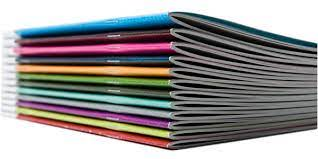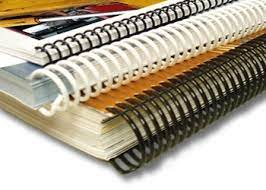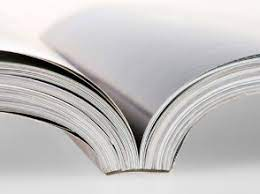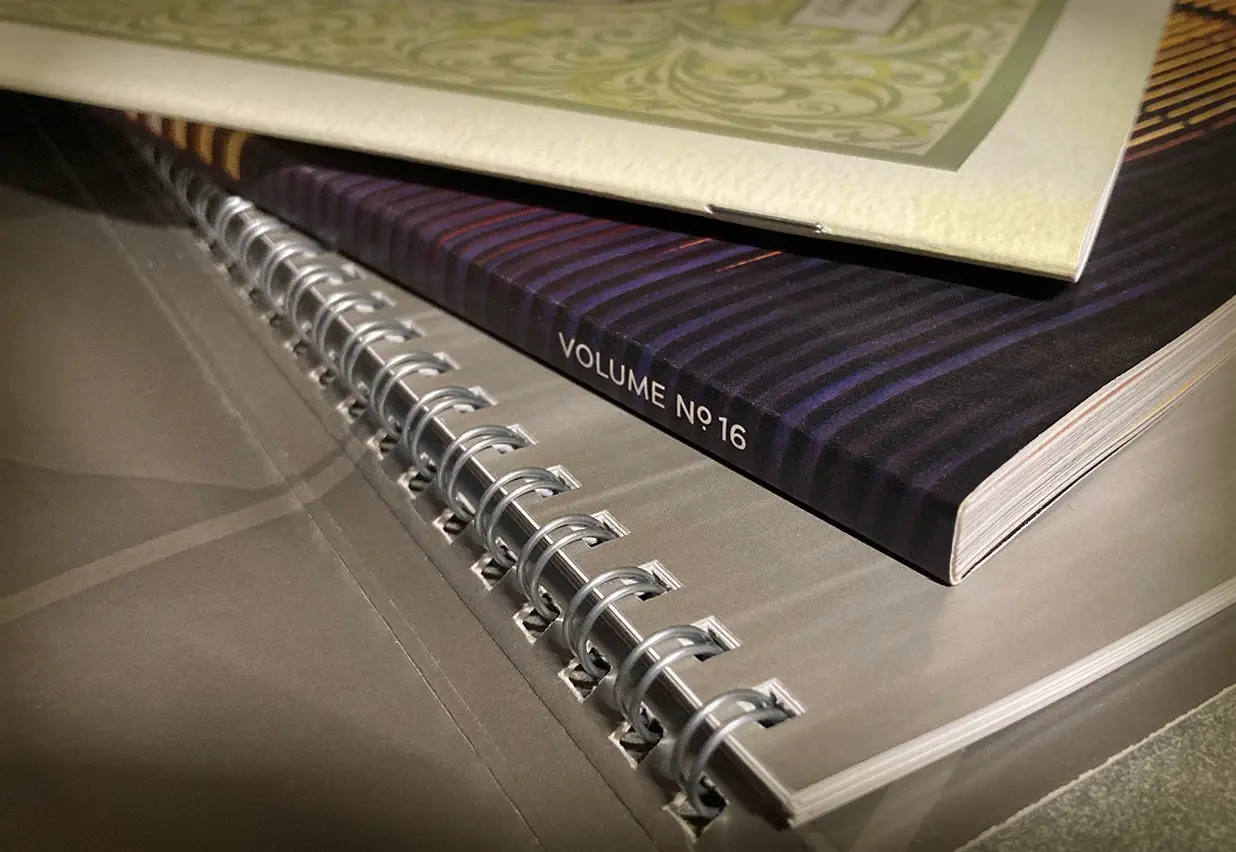Saddle Stitch Binding
Suited for smaller documents and sheets of paper, Saddle Stitch binding is one of the more simple ways to bind papers together.
Some people consider Saddle Stitch binding to be a more professional way of stapling papers. Instead of securing the papers together by placing the

staple in a corner, Saddle Stitch binding places the staples on the spine of the paper to create a more cost-effective brochure, booklet, catalog, magazine, or program. The sheets of all of the pages are printed and collated together. All of the pages are then run through a machine that simultaneously folds and inserts staples the pages together creating a spine. This type of binding is very popular and can be a cost-effective solution. This binding gives a “magazine type” feel to your project. For saddle stitch books each sheet of paper is considered 4 pages so the page count for saddle stitch books must be divisible by 4 (for example 8, 12, 16, 20, 24).

Wiro, Comb, or Spiral Binding
The most common practice for commercial documents and school notebooks is the wiro, comb, or spiral binding notebook. Spiral binding involves a simple loop wire being inserted through a hole punch made on the edge of the paper and two covers. Don't underestimate the

strength of the wire, comb, or spiral, because this is an extremely versatile and popular way of binding. This type of binding is one of the stronger, more durable ways of binding. Another advantage is that spiral binding can accommodate different paper types, thicknesses, and sizes giving a bit more flexibility to the book. Although this method of binding is durable it is not as aesthetically pleasing. Spiral binding can be more expensive than saddle stitch binding and because we do all work in our plant, perfect binding.
Perfect Binding
Perfect binding is probably the most popular type of binding that book printers use. This binding is used when the front and back cover are soft cover books. All pages are printed and collated together into numerical order. This is called a book block. A thicker paper is commonly used and wrapped around the book block to make a front and back cover. This

block is then inserted into a machine to glue all of these pages together. After the glue cools and hardens the book block is then trimmed to the requested size. Perfect binding is commonly used for manuals, catalogs, reports, and books. Perfect binding has the ability to get your message across more than other binding methods. Perfect binding allows for printing on the spine of the book, where spiral and saddle stitching can not. Perfect binding looks both professional and visually appealing.







